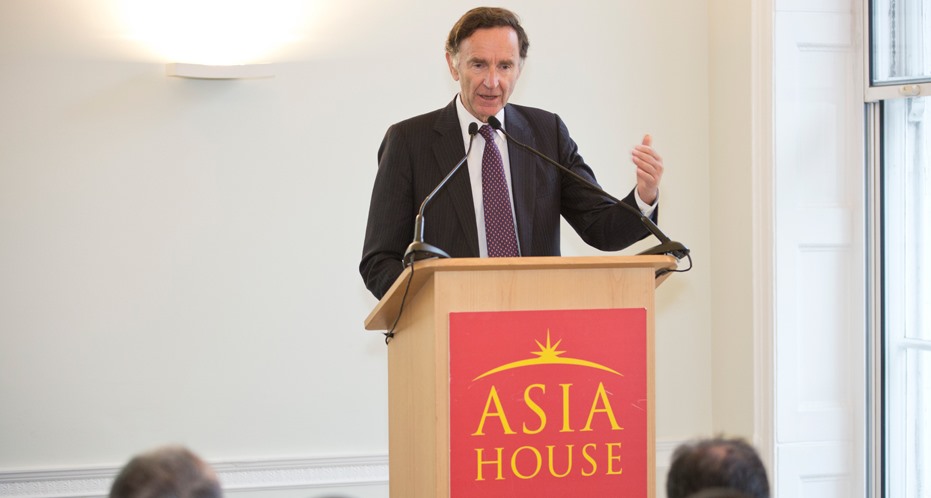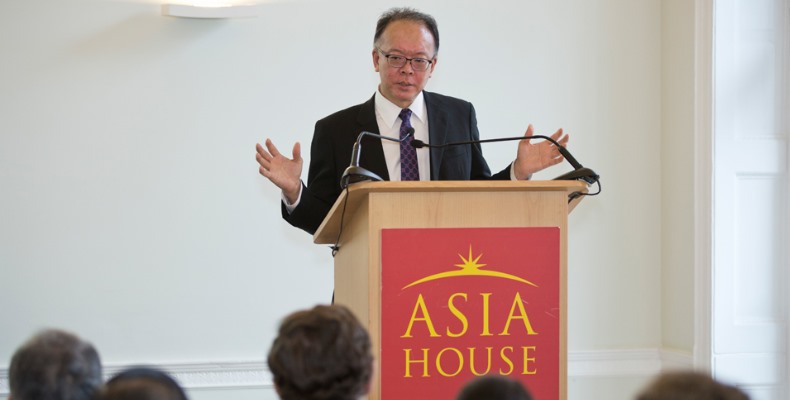Driving commercial and political engagement between Asia, the Middle East and Europe
Driving commercial and political engagement between Asia, the Middle East and Europe
Driving commercial and political engagement between Asia, the Middle East and Europe

There are two possible directions that the Association of Southeast Asian Nations (ASEAN) could go in. One is rapid economic growth, an increased sense of belonging to the Association and wider access to education across the region. The other is that dissent rises, the US withdraws its security commitment and China becomes a dominant player.
These were the views of Lord Green of Hurstpierpoint, who gave keynote remarks at the ASEAN on the global stage conference held at Asia House on Friday, 16 September. According to Lord Green, ASEAN is set for significant growth and businesses should not be ignoring it.
But he saw the key challenges ASEAN faced as cultural integration; neighbourhood geopolitics such as South China Sea tensions; ASEAN’s relationship with China; the environmental impact of growth; wealth disparities, the possibility of dissent rising; and question marks over the US’s commitment to security in the region.
Cultural integration is an issue owing to ethnic and religious tensions, prevalent in countries like Myanmar, he said. “But these will prove easy to handle compared to the challenge the EU faces with cultural integration over the next few decades,” he said.
There are also tensions between Vietnam and Cambodia, between Thailand and Cambodia and also differences in how ASEAN member states react to China, he said. “This was exposed in the last but one ASEAN meeting when the communique famously failed to address the South China Sea,” he said.
“The key thing about the South China Sea is that 45 per cent of all the world’s shipping passes through it,” Lord Green told the audience of business leaders and diplomats. “Fifteen million barrels of oil goes through it. It’s all about protection of vital paths of commerce and trade,” he said.
ASEAN has to balance its infrastructure needs, whilst at the same time not allowing one country to dominate, he said.
Japan and China both have strategic interests in ASEAN, he explained. “You want the railway link but you don’t want the geopolitical dominance,” he said. “Getting the balance right will be very challenging.”
“Japan thinks of ASEAN not just in terms of commerce but in terms of managing its relationship with China,” he added.
Lord Green, who is an Asia House trustee, made several parallels between ASEAN and the EU pointing out the EU’s big neighbour was Russia, and ASEAN’s was China. Both depended on the US security umbrella and both had “internal rivalries quite deeply-seated in history.”
“How committed is the US to the security umbrella? Europeans should ask this too,” he asked.
He also pointed out that with growth came an impact on resources, not least on primary forests, endangered species and access to water.
But equally there was room for optimism as ASEAN could go in another direction of providing greater access to education, offering rapid economic growth and a growing sense of belonging, he said.
Nevertheless the former Group Chairman of HSBC did not foresee an EU-style ASEAN common identity any time soon. “No one knows if they think of themselves in any meaningful sense as deriving their identity from ASEAN. But the EU experience is not very encouraging and nor is history,” he said. “As democracy spreads and takes deeper root, it becomes more challenging to create a sense of a common identity, he said.
He added that there was no chance of a single currency in ASEAN.
‘ASEAN single currency off the agenda’
“ASEAN is more cautious than the EU. Some argue the EU brought in the single currency too soon. ASEAN debated a single currency in 2002 and concluded that conditions were as right for it as they were in Europe before Maastricht but now in the light of Eurozone problems, no one wants to rush into it,” he said. “It’s off the agenda for the foreseeable future,” he said. “ASEAN will not make the mistake the EU made,” he added.
“ASEAN is run on consensus. There is very little institutional architecture,” Lord Green explained. “The ASEAN headquarters in Jakarta have 300 staff whereas the EU has 30,000. ASEAN has a budget of US$16m and the EU’s is US$120 billion,” he said.
“ASEAN goes at the pace of the slowest. ASEAN is a small central coordinating administration of a group of 10 nations that works together in recognition of its common interests. But its objectives are ambitious,” he said. However achieving a single market was a “long, slow journey,” he added.

Tham Sai Choy, Chairman, Asia Pacific and Managing Partner Singapore, KPMG said: “For a Singaporean, Brexit happened 50 years ago and we have never quite looked back”. Photo by George Torode
ASEAN is the “piece between China and India,” both of which have traditionally been the largest economies on the planet, and everything in between was an “overspill of that activity of these two civilisations,” said Tham Sai Choy, Chairman Asia Pacific and Managing Partner Singapore, KPMG, speaking at the same conference.
In the last 20 years or so ASEAN has learnt to compete with China and India, he explained. “The Philippines has had a higher growth rate than China this year. Vietnam and Malaysia are cruising along and then you have countries like Myanmar which have gone from no growth to eight per cent growth. Growth stories and opportunities are there,” he said.
Swedish multinational clothing-retail company H&M is billion dollar story in ASEAN – way ahead of its home base in Sweden, he pointed out.
He said ASEAN had moved on from the days before the Asian Financial Crisis of 1997 when countries relied on hot investment capital. Instead they had created their own domestic economies.
“The economies in this part of the world have totally transformed,” he said. Foreign exchange reserves were at different levels and public sector spending operated differently, he said.
“One of the trademarks of ASEAN is that everyone moves together. We don’t have the equivalent of the EU Commission that pushes things through. We move at the pace of the slowest and that seems more sustainable because it carries everyone along with it,” he added.
However, he pointed out that a two-track system of ASEAN was now being discussed as countries were at different stages of development.
He said in the period up to 2030, ASEAN would see an expanding middle class, increasing urbanisation, an ageing population and huge infrastructure and energy needs to accompany that. ASEAN needs $110 billion per year in infrastructure investment which includes transport, energy and digital connectivity.
But he said multinational companies had not yet grasped the opportunities. Whilst they all had China and India strategies, few had ASEAN strategies, he said. “You need an ASEAN strategy because it’s the bit between India and China,” he said.
‘Belt and Road is an overspill of economic activity from China’
So what does he make of China’s Belt and Road initiative? “Well the road is in the sea so it’s a bad way to come up with a global idea but a lot of people are talking about it,” he said. “When people say all roads lead to China, the Belt and Road is one of those phenomenons,” he added.
“Sitting in ASEAN nothing is being rolled out,” he explained. “It is a description of the overspill of economic activity of an economy that has transformed so quickly and is the second largest in the world – that overspill has gone to Central Asia and Southeast Asia. So it is also about infrastructure, rail links and urban transport systems.
“Vietnam has been the biggest beneficiary of the overspill as it is close to Southern China where the supply chain clusters are but Vietnam is also an important ally to the US and the western economic system because of its proximity to China,” he said.
He added he was optimistic the Trans-Pacific Partnership (TPP) would get through the US Congress as Obama’s legacy “rests on his pivot to Asia.” Obama has said he wants to win congressional approval for TPP before he leaves office. “I think something might happen by January. It’s put into stark contrast the question of China and how to deal with that region,” he said.
And Brexit? “For a Singaporean, Brexit happened 50 years ago and we have never quite looked back,” Mr Choy said.
The conference, which drew on insights from KPMG’s recently published Southeast Asia in transition report, attracted business leaders and diplomats.
KPMG launched a report titled Forging Ahead focused on UK-ASEAN business after Brexit at the conference. Asia House has contributed insights from its network to the publication. Download the report here.
naomi.canton@asiahouse.co.uk
Mark Boleat, Chairman of the City of London Policy and Resources Committee, will brief Asia House corporate members on the implications of the EU referendum for the City of London as a key global financial centre at Asia House on 23 September. For more information click here.
To see all the events that Asia House is holding as part of the Asia House Brexit Series click here.
To read all the Asia House stories on Brexit click here.
